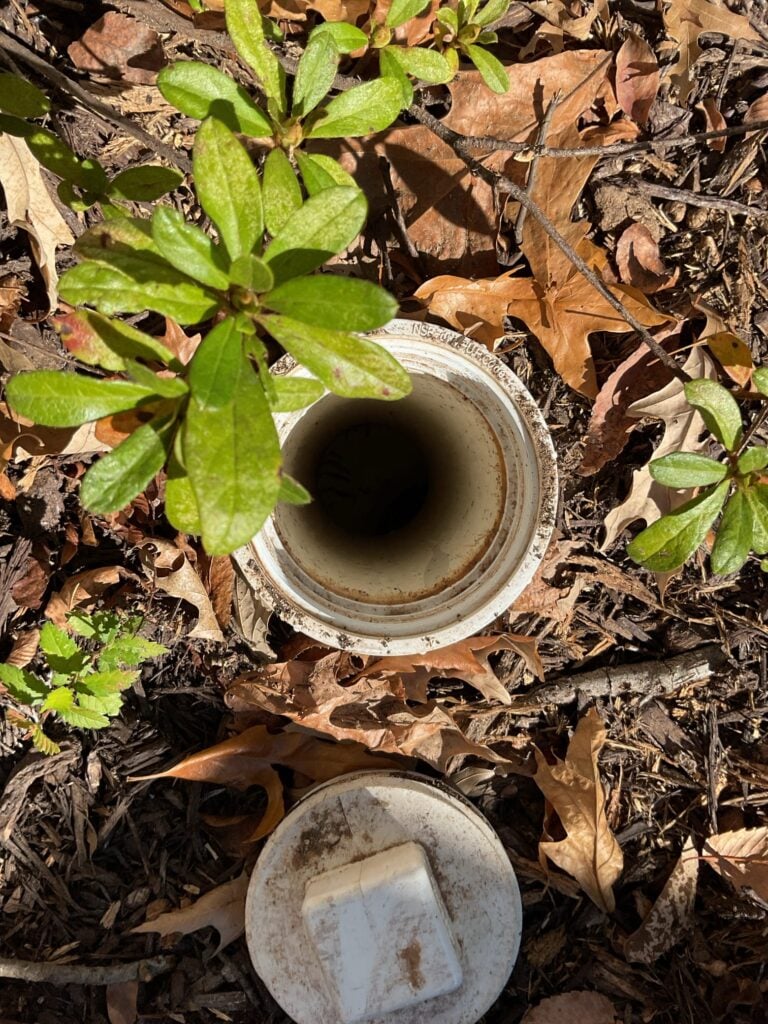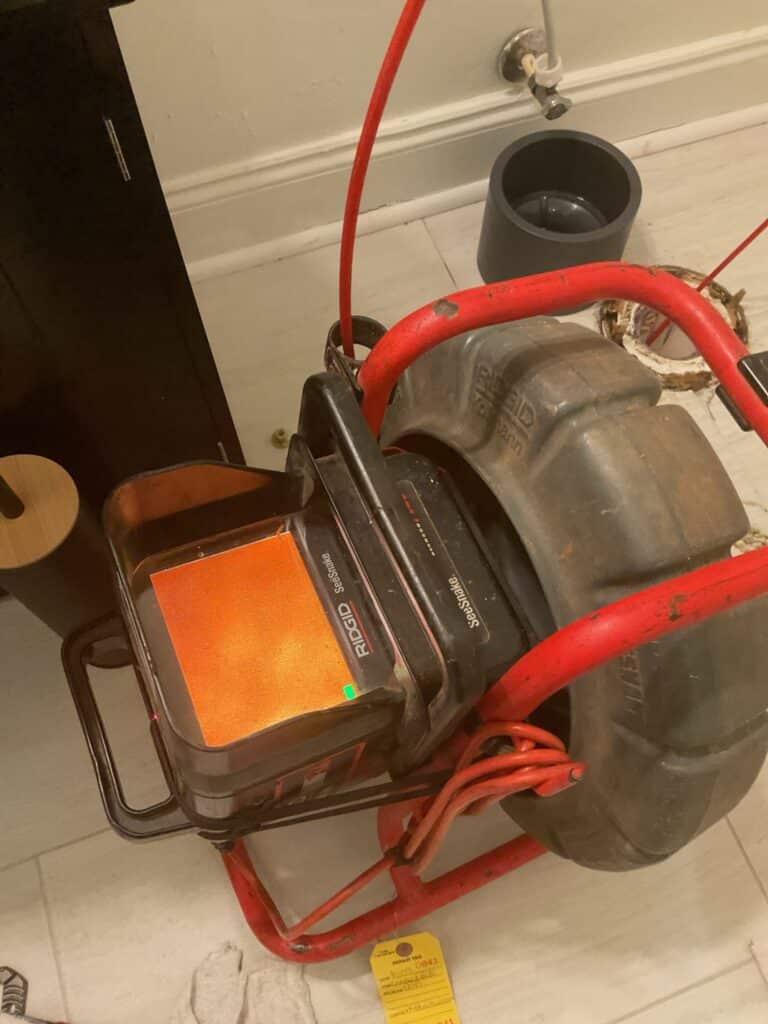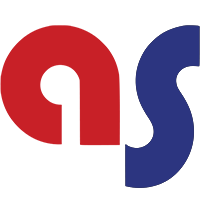Signs of a Collapsed Sewer Line
A sewer line collapse is one of the most serious plumbing issues a homeowner can face. It can lead to sewage backups, foul odors, and even property damage if not addressed quickly. Recognizing the signs of a collapsed sewer line early can make the difference between a manageable repair and a full replacement.
What Are the Most Common Signs of a Collapsed Sewer Line?
When a sewer line begins to fail, it often shows warning signs before a complete collapse. Here are the most common signs of a collapsed sewer line to look out for:
- Frequent drain clogs – If multiple drains throughout your home are slow or backing up, it usually means the problem lies deeper in your plumbing system.
- Gurgling toilets or drains – Air trapped in damaged pipes creates bubbling sounds when water drains.
- Sewage odors – Persistent sewer gas smells in your yard or inside your home are a strong indicator that wastewater isn’t flowing properly.
- Patches of lush grass – A collapsed sewer pipe can leak nutrient-rich wastewater, creating unusually green or soggy areas in your yard.
- Foundation cracks or sinkholes – Severe collapses can cause soil erosion, affecting your home’s foundation.
- Sewage backups – The clearest sign of all: wastewater coming back up through drains or toilets signals a serious blockage or collapsed line.
- Water in your cleanouts – If you remove the cap from the sewer line cleanout in your yard and see standing water, you may be seeing one of the most common signs of a collapsed sewer line
These signs of a collapsed sewer line are your cue to call a professional plumber right away. The longer you wait, the more extensive and expensive the damage can become. One of the primary problems you want to avoid is a back up in your home. Sewage water is often category 3 water, which needs to be handled very carefully by water mitigation experts. If you’re seeings signs of a collapsed sewer line, stop using any water in your home and call a sewer and drain specialist.

What Causes a Sewer Line to Collapse?
Sewer lines are designed to last for decades, but time, soil conditions, and environmental factors can all take their toll. Understanding what causes a sewer line to collapse can help you prevent future issues.
Pipe Material and Age
Different pipe materials fail in different ways depending on their age and composition.
- Clay pipes, common in homes built before the 1970s, are vulnerable to cracking and root intrusion.
- Cast iron pipes corrode from the inside out, eventually weakening until they collapse.
- Orangeburg pipes, made of compressed tar paper, can deform and collapse after only a few decades.
- PVC pipes are more durable but can still fail if improperly installed or exposed to extreme soil pressure.
As these materials age, they lose structural integrity. Once weakened, even minor pressure or shifting soil can lead to a collapse.
Soil Shifting and Ground Movement
Expansive clay soils, heavy rains, or nearby construction can shift the ground around your sewer line. Over time, these movements put stress on aging pipes, eventually causing cracks and collapses.
Heavy Equipment or Vehicle Traffic
Driving or parking heavy vehicles over your sewer line, especially if it’s buried under a driveway or yard, can compress and crush weakened pipes. This is a frequent cause of sewer line collapse in older neighborhoods.
Tree Root Intrusion
Tree roots are drawn to the moisture inside sewer pipes. Once they find a small crack, they grow inside the pipe, eventually causing blockages and total collapse.
Collapsed Sewer Line vs. Collapsed Drain Field
Homeowners sometimes confuse a collapsed sewer line with a failed drain field, but they’re different problems.
A sewer line connects your home’s plumbing to the city’s main sewer. When it collapses, wastewater can’t reach the public system, leading to backups in your sinks, tubs, and toilets.
A drain field is part of a septic system. When it fails, wastewater may pool in your yard or cause outdoor odors, but indoor plumbing might still work temporarily.
If you’re unsure whether you have a collapsed sewer line or a drain field problem, a professional sewer camera inspection can give a clear answer.
How Does a Plumber Diagnose a Collapsed Sewer Line?
When diagnosing the signs of a collapsed sewer line, a plumber begins by trying to clear the line of standing water. This step is crucial because water buildup can block visibility and make it difficult to determine the exact cause of the issue.

If the plumber can’t get the water to drain, it often means there’s a serious obstruction—possibly a collapse—and while they may not see the collapse or break itself, they’ll know precisely where the problem area is located and that repair is needed.
If the water can be cleared, the plumber will then perform a sewer camera inspection using specialized equipment that includes a camera and an electronic locator. This allows them to see inside the pipe, pinpoint the exact location of damage, and assess whether it’s a full collapse or another type of blockage. Based on what the plumber finds during the sewer scope inspection, they’ll discuss repair or replacement options tailored to the condition of your sewer line.
If You’re Seeing Signs of a Collapsed Sewer Line, What Are Your Options?
Once you’ve confirmed that you are seeing signs of a collapsed sewer line, you’ll need to decide on the best repair method. The right choice depends on the extent of the damage, the location of the collapse, and the type of pipe involved.
1. Spot Repair
If only a small section of the sewer pipe has collapsed, plumbers can sometimes dig up and replace just that section. This is the least expensive repair option—but it’s only effective when the rest of the line is in good condition.
If your sewer pipe has collapsed due to age or deteriorating material, a spot repair might not be your best bet. Fixing one spot could just highlight existing weaknesses farther down the line, leading to more breakdowns later. In these cases, a full replacement may be a smarter long-term investment.
2. Full Sewer Line Replacement
When the pipe is extensively damaged or made from outdated material like Orangeburg or cast iron, a complete replacement is often the best choice. The old pipe is removed, and a new PVC or HDPE pipe is installed. Though this option involves more digging, it provides peace of mind and a long lifespan for your new sewer line. A sewer line replacement may be more costly initially, than a sewer line repair, but if the line’s integrity is too far gone, multiple sewer line repairs can quickly add up to well beyond the cost of a sewer line replacement.
3. Trenchless Sewer Line Repair
In many cases, modern trenchless methods can restore your line without digging up your entire yard. Techniques like pipe bursting (replacing the old pipe by pulling a new one through it) or pipe lining (inserting a resin-coated liner to create a new interior pipe) can be completed quickly with minimal disruption.
However, if your pipe’s structure is too far gone, pipe relining generally isn’t an option. There must be enough solid pipe remaining for the liner to adhere to; otherwise, the relining process won’t work. A professional inspection is the best way to determine whether trenchless repair is possible.
Trenchless repairs are faster and cleaner, but they’re not suitable for every situation—particularly when the collapse has destroyed the pipe’s structure entirely.
Hydrojetting and Collapsed Sewer Lines
Hydrojetting uses high-pressure water to clear out debris, grease, or minor obstructions in sewer lines. It’s generally necessary before pipe relining, since the pipe’s interior must be clean and smooth for the liner to bond correctly.
However, hydrojetting alone will not resolve the signs of a collapsed sewer line that you may be experiencing. It can temporarily improve drainage if the pipe isn’t fully caved in, buying homeowners a little time to plan a permanent fix. But if the pipe has collapsed too severely, jetting won’t help—it can’t restore structural integrity to a broken line.
Will Insurance Cover a Collapsed Sewer Line?
When customers see signs of a collapsed sewer line, they often start by calling their insurance company. The answer depends largely on your policy and the cause of the damage.
Most standard homeowners insurance policies do not cover normal wear and tear, corrosion, or damage caused by tree roots. However, they may cover sudden and accidental events—such as damage from a vehicle impact or construction accident.
Some insurers now offer optional service line coverage, which can pay for repairs or replacement of underground pipes that connect your home to the street. If you live in an older home, it’s worth asking your agent about this add-on.
When you notice the signs of a collapsed sewer line, check your policy right away. If coverage is possible, your plumber can document the cause of the collapse to support your claim.
What Is a Sewer Line Repair?
Sewer line repair involves inspecting, accessing, and fixing damaged pipe sections to restore flow. The process usually begins with a sewer camera inspection—a waterproof camera is inserted into the line to identify blockages, breaks, or collapsed areas. The cost of a sewer line repair can vary significantly depending on the depth of the repair, location of utilities, and other factors that affect access to the drain pipe.
Depending on what’s found, your plumber may recommend one or more of the following steps:
- Hydrojet cleaning to clear debris before repair or lining.
- Pipe lining to seal small cracks or partial collapses (when enough structural pipe remains).
- Excavation and replacement for full collapses or deteriorated materials.
Sewer line repair requires expertise, safety compliance, and specialized equipment. Attempting to DIY a collapsed sewer line can make the problem worse and expose you to health risks from raw sewage.
Why You Should Act Quickly
Ignoring the signs of a collapsed sewer line can lead to serious consequences. A small collapse can quickly become a full blockage, causing sewage backups inside your home. Continued leakage can erode soil and even compromise your home’s foundation.
Calling a professional plumber at the first sign of trouble saves time, stress, and money in the long run.
Why Choose Aaron Plumbing, Heating, Cooling
When you suspect a sewer line collapse, you need a plumber with the right experience, equipment, and honesty to fix it right the first time. Aaron Plumbing, Heating, and Cooling has served Metro Atlanta homeowners since 1978, combining decades of family-owned expertise with advanced diagnostic tools.
Our team has extensive experience identifying and repairing signs of a collapsed sewer line in homes across North Georgia. We use state-of-the-art camera inspections to locate the exact issue, explain your options clearly, and recommend long-term solutions.
As a family-owned and operated company, we understand that plumbing problems disrupt more than just pipes—they disrupt your life. That’s why we focus on clear communication, fair pricing, and quality workmanship from start to finish. We don’t charge emergency fees, and our trucks are fully stocked so we can often make repairs the same day.
Whether you need a simple repair or a full trenchless replacement, you can trust Aaron Plumbing, Heating, and Cooling to restore your peace of mind and keep your home safe.
Preventing Future Sewer Line Collapses
While you can’t prevent every sewer line collapse, regular maintenance helps extend your system’s lifespan.
- Schedule routine sewer inspections every few years to catch problems early.
- Avoid flushing non-degradable items like wipes or paper towels.
- Don’t pour grease down your drains—it solidifies and accelerates deterioration.
- Plant trees away from your sewer line path to avoid root intrusion.
- Keep an eye on early warning signs like recurring clogs, gurgling noises, or sewage smells.
Being proactive helps prevent small issues from turning into major repairs.
Restoring Peace of Mind After a Collapsed Sewer Line
A collapsed sewer line is never convenient, but knowing what to look for and how to respond can make all the difference. If you’re seeing frequent clogs, strange gurgling sounds, or unexplained wet spots in your yard, don’t ignore them—these are warning signs that your sewer line may be in trouble.
At Aaron Plumbing, Heating, and Cooling, we’ve helped thousands of homeowners through situations just like this. Our technicians are trained to identify the cause quickly, explain repair options clearly, and restore your system safely and efficiently.
When you suspect a sewer line problem, reach out right away. We’ll help you diagnose the issue, discuss affordable repair options, and get your plumbing flowing smoothly again.



